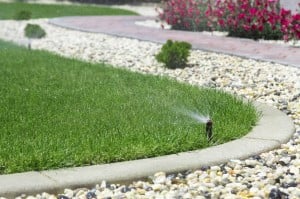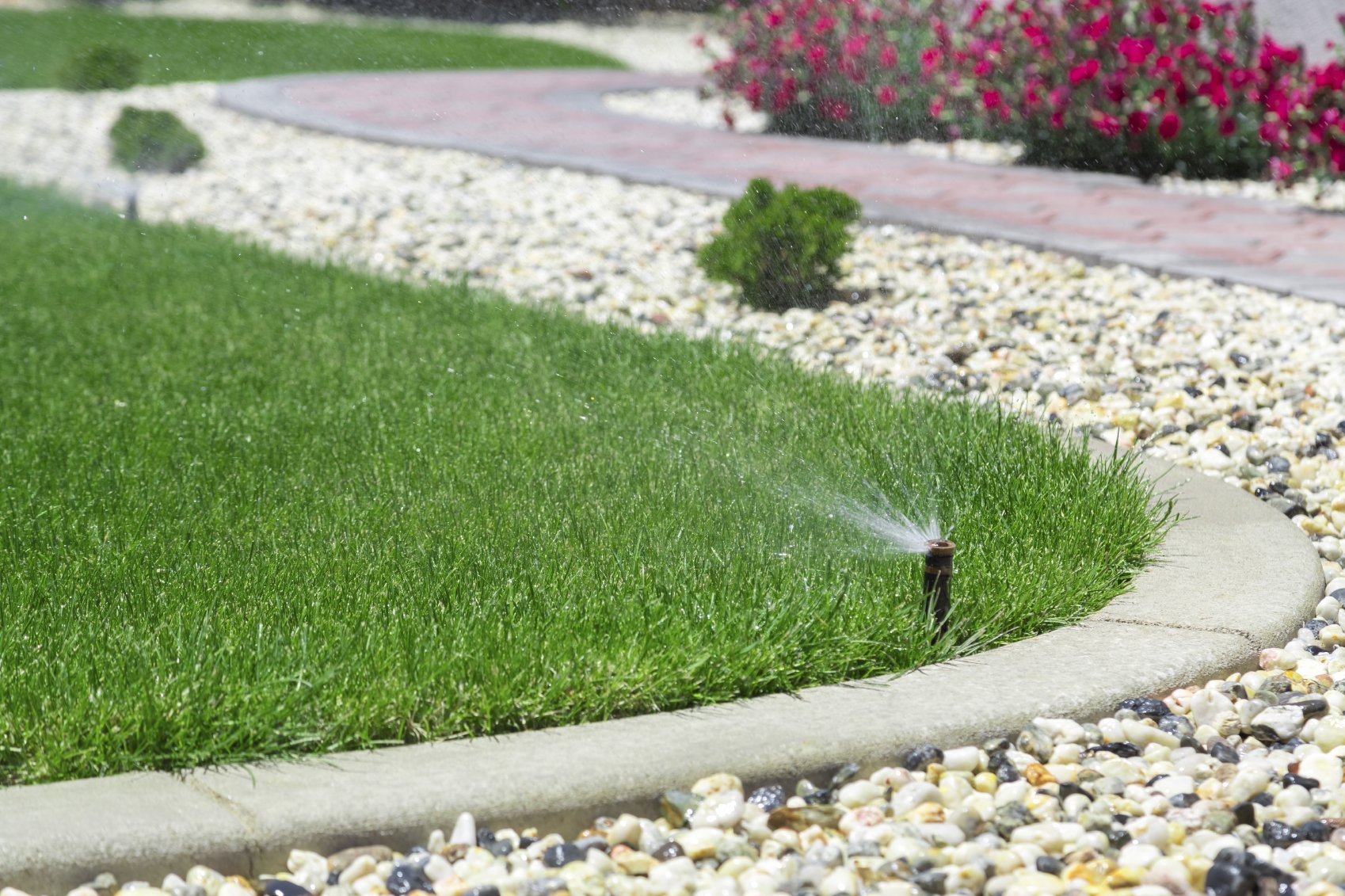 How much do you currently spend watering your landscape? Irrigation costs can vary considerably depending on the size of your property, the types of plants you have, as well as many other elements. To get an overall idea of how water-wise your current landscaping is, break your yard down into three different zones: regular watering, occasional watering, and natural rainfall (zero watering). If the majority of your property falls under regular watering you are clearly spending too much each month on your water bill.
How much do you currently spend watering your landscape? Irrigation costs can vary considerably depending on the size of your property, the types of plants you have, as well as many other elements. To get an overall idea of how water-wise your current landscaping is, break your yard down into three different zones: regular watering, occasional watering, and natural rainfall (zero watering). If the majority of your property falls under regular watering you are clearly spending too much each month on your water bill.
On average, Americans use 320 gallons of water a day, and 30% of this water usage is used outside. But in some cases, as much as 60% of all household water usage is dedicated to the outdoors, an excessive amount of water that doesn’t need to be wasted. http://www.epa.gov/WaterSense/pubs/outdoor.html
As the cost of water continues to rise it’s important to consider water-wise landscaping. In this blog, we detail 5 water-wise landscaping ideas that will save you money and help reduce the burden currently imposed on our planet for more water.
1. Install And Maintain Efficient Landscape Irrigation Systems
50% of the water Americans use outdoors is wasted due to inefficient water irrigation systems. Evaporation, runoff, and wind can all contribute to this wasted water. When hiring an irrigation professional to install your system and conduct regular maintenance check for the WaterSense label instituted by the U.S. Environmental Protection Agency. WaterSense labeled irrigation control panels act like a thermostat for your sprinkler system, allocating the amount of water released each day based on current weather conditions.
Another huge issue with irrigation systems is that they are broken, and therefore unknowingly wasting a lot of water.In order to make sure your irrigation system is in proper working order check your system regularly for any sign of leaks, broken sprinklers, or clogged emitters. Make repairs as soon as you notice an issue.
You can also adjust the run time of your sprinkler system to accommodate any issues related to slopes, run-off, and high traffic.
To insure your irrigation system is not overwatering, check the soil moisture with a soil probe. Push the soil probe into the land until you feel some resistance, the resistance will occur as soon as you reach dry soil. Moisture really only needs to be present at and around the root zone, and if it extends well beyond this you can cut back on watering. (See our self-watering planters)
2. Skip The Massive Green Lawn
Fields of lush, green grass are undeniably beautiful but they are expensive, and often tricky to maintain. Installing smaller patches of grass and using different ground coverings throughout your landscaping can save a considerable amount of water. In fact, lawns consume the greatest amount of water compared to all other landscaping elements.
If possible, you especially want to skip grass in slopped areas. Any land that is situated on a slant will lose water faster due to drain off, meaning grass on a slope requires even more water. Unless you need grass for a specific reason, there are plenty of other ground coverings to choose from. Rocks, pavement and brick might not offer the green coverage you are craving, in which case a plant bed that consists of native plants will offer the bright, natural wow factor without requiring nearly as much water.
If you must have some green grass look for types of grass that require less water and maintenance. Also, be sure you don’t overwater it. You can tell if your grass needs water or not by stepping on it. If the grass springs back into place when you remove your foot it does not need water. (Read more on this)
3. Add Native Plants To Your Landscape
Native plants are ‘native’ for a reason. They are able to naturally grow in your climate without much, if any, assistance. Plants that are not native to your area often require a lot of water in order to maintain a healthy appearance in a climate they are not naturally made to endure. Native plants require far less water because they are able to flourish with the average rainfall your region receives. Right away this reduces how often you have to turn on the sprinklers. A quick Internet search will turn up the native plants in your area. More than likely there are some beautiful options you can plant throughout your yard.
4. Use Self-Watering Planters
Planters offer a great way to add style and height to your landscaping, and they can also help you save on watering costs. Self-watering planters are built with a special water catch system that collects the water as it drains through the soil. Then, when your plant needs water, the roots can reach down into the chamber and reuse this water. This allows you to water your plants less, reuse water, and maintain healthier plants without as much effort.
5. Set Out Rain Barrels
An easy way to save money and impress your friends with your green efforts is to set up rain barrels around your property. These barrels will catch rainwater, granting you free water to use on your yard long after the cloudy skies have cleared away. Rain barrels have been used since ancient times to catch rain and irrigate landscaping. On average they range between $75 and $350 to set up, but with some creativity and basic plumbing skills you can get the job done for even less. (See here)
The Importance Of Water-Smart Landscaping
Saving money on your water bill isn’t the only reason to seek drought-resistant landscaping. Turn on your faucet and the water comes rushing out, making everyone feel less than threatened by water shortages. Although, in reality the problem is real and the less water we can all use, the better. Parts of the country, especially in the West, are experiencing serious water shortages. In fact by 2050 it is expected that the Sierra Nevada snowpack will be depleted by 25%. And due to urban growth rates, the San Pedro River in Arizona already runs dry in certain places.
Go green with us at TerraCast Products by installing water-wise landscapes that are smart for both your wallet and the planet.

